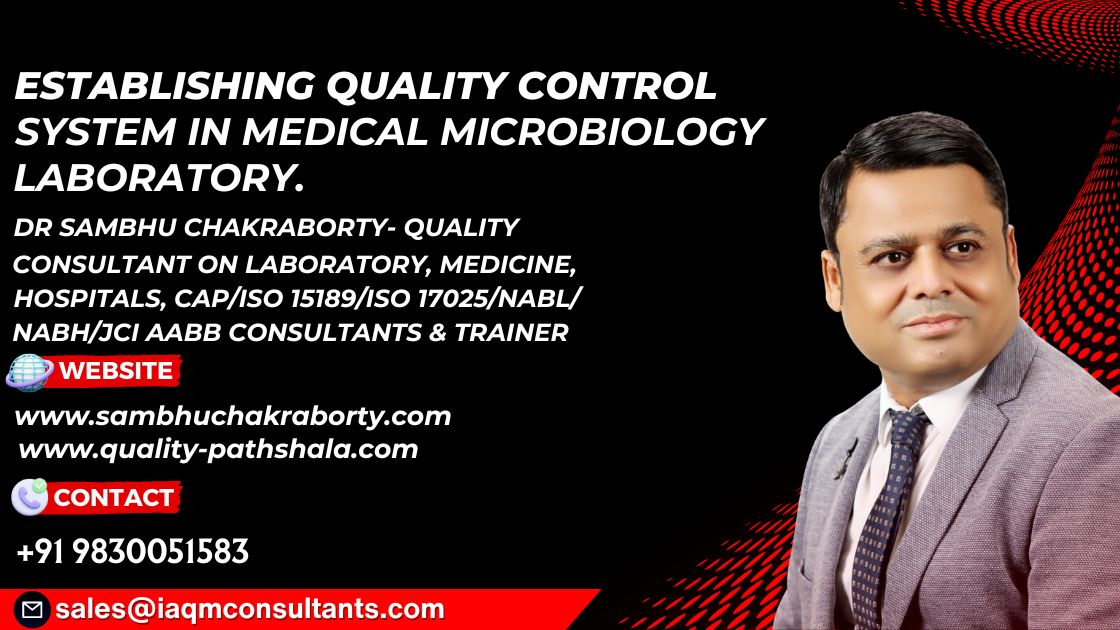Establishing a robust microbiology quality control system in a medical laboratory is crucial for ensuring accurate and reliable test results, patient safety, and compliance with regulatory standards. Here’s a step-by-step guide to help you establish a microbiology quality control system:
- Define Quality Control Objectives:
Clearly define the objectives of your microbiology quality control system. Determine what you want to achieve, such as accurate identification of microorganisms, reliable susceptibility testing, and adherence to regulatory requirements.
- Design Quality Control Protocols:
Develop detailed quality control protocols for each microbiological test performed in your laboratory. These protocols should outline procedures for sample handling, testing, interpretation, and reporting. Determine which microbiology tests require quality control, the frequency of control testing, and the specific control materials to be used. This includes positive and negative controls, as well as reference strains for antimicrobial susceptibility testing.
- Select Control Strains:
Choose appropriate control strains for each test. Control strains should represent common microorganisms encountered in your laboratory and cover a range of susceptibilities. Choose appropriate commercial or in-house control materials that closely mimic clinical samples. Ensure that these controls cover the range of pathogens and conditions commonly encountered in your laboratory.
- Control Testing Frequency:
Establish a schedule for routine quality control testing. Control materials should be tested as frequently as patient samples are run, and especially when new lots of reagents or equipment are introduced.
- Develop Control Panels:
Create control panels that include positive and negative control strains for each test. These control panels will be used for routine quality control testing.
- Define Acceptance Criteria:
Establish acceptance criteria for control results. Determine the allowable range for growth or inhibition zones and ensure they are aligned with regulatory standards and clinical significance.
- Training and Competency Assessment:
Provide comprehensive training to microbiology staff on quality control procedures. Regularly assess their competency to ensure they perform tests accurately and follow established protocols.
- Instrument Calibration and Maintenance:
Calibrate and maintain all microbiology instruments regularly to ensure accurate results. Establish a schedule for maintenance, calibration, and verification procedures.
- External Quality Assurance (EQA):
Participate in external proficiency testing programs for microbiology. EQA helps benchmark your laboratory’s performance against other laboratories and identifies areas for improvement.
- Documentation and Record Keeping:
Maintain thorough documentation of all quality control activities, including test results, instrument calibrations, maintenance records, and training records.
- Data Analysis and Trend Monitoring:
Analyze quality control data over time to identify trends and patterns. Implement corrective and preventive actions when deviations or trends are observed.
- Root Cause Analysis and CAPA:
When quality control failures occur, conduct root cause analysis to identify underlying causes. Implement corrective and preventive actions (CAPA) to prevent recurrence
- Quality Control Reviews and Meetings:
Hold regular quality control meetings to review data, discuss challenges, and make improvements. Involve microbiologists, technologists, and quality management personnel.
- Regulatory Compliance:
Ensure your microbiology quality control system adheres to relevant regulatory guidelines and standards, such as those set by CLSI or other organization as applicable
- Continuous Improvement:
Foster a culture of continuous improvement by encouraging staff to suggest and implement changes that enhance quality control processes.
- Auditing and Assessment:
Conduct regular internal audits of your microbiology quality control system to identify gaps and areas for improvement.
- Documentation and Reporting:
Compile all quality control procedures, protocols, records, and reports in a well-organized system for easy reference and inspection.
By following these steps, you can establish a microbiology quality control system that ensures the accuracy, reliability, and integrity of microbiological test results in your medical laboratory.
About the author
Dr. Sambhu Chakraborty is a distinguished consultant in quality accreditation for laboratories and hospitals. With a leadership portfolio that includes directorial roles in two laboratory organizations and a consulting firm, as well as chairmanship in a prominent laboratory organization, Dr. Chakraborty is a respected voice in the field. For further engagement or inquiries, Dr. Chakraborty can be contacted through email at director@iaqmconsultants.com and info@sambhuchakraborty.com. Additional resourcesand contact information are available on his websites, https://www.quality-pathshala.com and https://www.sambhuchakraborty.com, or via WhatsApp at +919830051583
